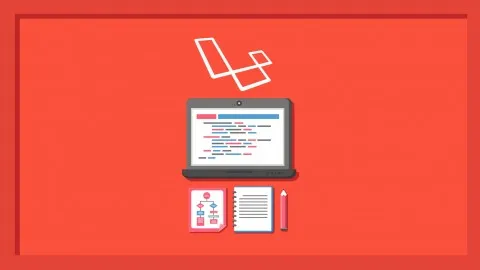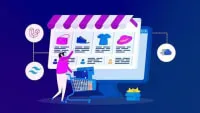
Laravel login system using Laravel Fortify a complete course 
This course will teach you how to create a secure login system using Laravel Fortify. You will learn how to create a user, add two-factor authentication, and protect your login page. You will also gain the skills and knowledge needed to create a secure online learning environment. This course is perfect for anyone looking to learn more about Laravel Fortify and secure login systems. ▼
ADVERTISEMENT
Course Feature
![]() Cost:
Cost:
Free
![]() Provider:
Provider:
Udemy
![]() Certificate:
Certificate:
No Information
![]() Language:
Language:
English
Course Overview
❗The content presented here is sourced directly from Udemy platform. For comprehensive course details, including enrollment information, simply click on the 'Go to class' link on our website.
Updated in [May 25th, 2023]
This course provides an overview of the Laravel Fortify package and how to use it to create a secure login system. It covers the basics of setting up a user in Laravel Fortify, as well as how to add two-factor authentication (2FA) to the login page.
The course begins by introducing the Laravel Fortify package and its features. It then covers the basics of setting up a user in Laravel Fortify, including how to create a user, assign roles, and set up authentication.
Next, the course covers how to add two-factor authentication (2FA) to the login page. This includes setting up the 2FA service, configuring the authentication settings, and testing the login page.
Finally, the course covers how to customize the login page with custom HTML and CSS. This includes how to add a logo, change the background color, and add custom text.
At the end of the course, students will have a complete understanding of the Laravel Fortify package and how to use it to create a secure login system. They will also have the skills to customize the login page with custom HTML and CSS.
[Applications]
After completing this course, students can apply their knowledge of the Laravel Fortify package to create a secure login system for their own applications. They can also use the package to add two-factor authentication to their login page to further protect their application. Additionally, students can use the package to create users and manage user roles and permissions.
[Career Paths]
1. Web Developer: Web developers are responsible for creating and maintaining websites. They use a variety of programming languages, such as HTML, CSS, JavaScript, and PHP, to create websites that are both functional and aesthetically pleasing. With the rise of frameworks such as Laravel, web developers are increasingly expected to have a working knowledge of the framework in order to create more efficient and secure websites.
2. Software Engineer: Software engineers are responsible for designing, developing, and testing software applications. They use a variety of programming languages, such as Java, C++, and Python, to create software applications that are both efficient and secure. With the rise of frameworks such as Laravel, software engineers are increasingly expected to have a working knowledge of the framework in order to create more efficient and secure software applications.
3. Database Administrator: Database administrators are responsible for managing and maintaining databases. They use a variety of database management systems, such as MySQL, Oracle, and Microsoft SQL Server, to ensure that databases are secure and efficient. With the rise of frameworks such as Laravel, database administrators are increasingly expected to have a working knowledge of the framework in order to create more efficient and secure databases.
4. Security Analyst: Security analysts are responsible for identifying and mitigating security risks. They use a variety of security tools, such as firewalls, antivirus software, and intrusion detection systems, to ensure that networks and systems are secure. With the rise of frameworks such as Laravel, security analysts are increasingly expected to have a working knowledge of the framework in order to create more secure and efficient systems.
[Education Paths]
1. Bachelor of Science in Computer Science: This degree path provides students with a comprehensive understanding of computer science fundamentals, such as programming, software engineering, and computer architecture. Additionally, students will learn about the latest technologies and trends in the field, such as artificial intelligence, machine learning, and cloud computing. This degree path is ideal for those looking to pursue a career in software development, web development, or data science.
2. Bachelor of Science in Information Technology: This degree path focuses on the application of technology to solve business problems. Students will learn about the fundamentals of information systems, such as database management, network security, and software development. Additionally, students will gain an understanding of the latest trends in the field, such as cloud computing, big data, and mobile application development. This degree path is ideal for those looking to pursue a career in IT management, software engineering, or web development.
3. Master of Science in Computer Science: This degree path provides students with an advanced understanding of computer science fundamentals, such as algorithms, data structures, and software engineering. Additionally, students will learn about the latest technologies and trends in the field, such as artificial intelligence, machine learning, and cloud computing. This degree path is ideal for those looking to pursue a career in research, software development, or data science.
4. Master of Science in Information Technology: This degree path focuses on the application of technology to solve business problems. Students will learn about the fundamentals of information systems, such as database management, network security, and software development. Additionally, students will gain an understanding of the latest trends in the field, such as cloud computing, big data, and mobile application development. This degree path is ideal for those looking to pursue a career in IT management, software engineering, or web development.
Course Syllabus
Install and configure Laravel Fortify
Create our login and registration pages
Connecting frontend views to Laravel Fortify on the backend
Pros & Cons

Informative

Exact expectations met

Great explanations

Awesome

Clear instructions

Very good

Very well explained

Muy bien explicado

No code provided
Course Provider

Provider Udemy's Stats at AZClass
Discussion and Reviews
0.0 (Based on 0 reviews)
Explore Similar Online Courses

TypeScript Basics

Free Upwork Tutorial - How can I become high rating freelancer on upwork

Python for Informatics: Exploring Information

Social Network Analysis

Introduction to Systematic Review and Meta-Analysis

The Analytics Edge

DCO042 - Python For Informatics

Causal Diagrams: Draw Your Assumptions Before Your Conclusions

Whole genome sequencing of bacterial genomes - tools and applications

Introduction to Laravel 4

Real Time Chat With Laravel Broadcast Pusher and Vuejs

Laravel 8 : Build a shopping cart & deploy it on Cloudways
 Related Categories
Related Categories
 Popular Providers
Popular Providers
 Popular Searches
Popular Searches
Quiz
 Submitted Sucessfully
Submitted Sucessfully
1. What is Laravel Fortify?
2. What is the purpose of Laravel Fortify?
3. What is the benefit of using Laravel Fortify?


Start your review of Laravel login system using Laravel Fortify a complete course